How Carlos Sainz and L'Oréal Conquered Cannes
From Cannes red carpet to campaign visuals, L'Oréal and Carlos Sainz reveal one of the smartest, most seamless brand plays this year.
One thing I've been blessed with is good (albeit dry) skin and a face card that, according to people, makes me look 22 — despite having the personality of a 29-year-old (my actual age), and sometimes the mood and social life of an 80-year-old. I'm one of those people who can be incredibly social, but once my social battery runs out, it's goodbye, everyone. And honestly, I'm a big fan of weekends at home with sports on TV and a solid self-care session — like this one, featuring a full weekend of racing action at Imola (this track has to stay on the calendar) and the ATP Rome tennis final with my favourite duo: Sinner and Alcaraz (I noticed what you are doing there with their diverse tennis gear Nike, it's giving the new Federer-Nadal also in terms of style and I am loving it)
Anyway, it's been a long week, and the other routine everyone seems to care about lately is Carlos Sainz's haircare. Something L'Oréal saw, knew, and fully capitalised on. Today we're diving into one of the brand ambassadorships that made the most sense to me — and how, just like someone post-breakup stepping into their glow-up era, Carlos is entering a new phase post-Ferrari. Gosh, sometimes I really do miss my days in the beauty industry.
Cannes is proof that beauty loves Formula 1 (and vice versa)
We all gasped when we realised we'd see Carlos suited up for the red carpet (because honestly, who wouldn't?) — especially at a film festival like Cannes. Dressed in a sharp black tuxedo, Sainz walked the red carpet with Eva Longoria, symbolising the fusion of sport and Hollywood glamour. We saw content across both the brand's and Carlos's platforms all weekend, driving significant online engagement: L'Oréal Paris's TikTok video highlighting "the @carlossainz55 effect" at Cannes racked up over 300,000 likes and 1,700+ comments.
To me, this was a clear indicator of what L'Oréal sought in Carlos: one of the most followed drivers, with reach that extends beyond Formula 1's core audience, both male and female. For Sainz, L'Oréal effectively placed him into lifestyle and entertainment media conversation with a clear sign their ambition to position him (and their Men Expert/Elvive lines) in mainstream culture is working.
For many, Cannes marked the peak of this partnership, but I believe it's only the beginning. More and more, Formula 1 drivers are becoming lifestyle and luxury ambassadors and in L'Oréal's case, there's still plenty to unpack about what the ideal ambassadorship looks like today.
L’Oréal joined the game at exactly the right moment. After years of building its audience, Formula 1 is now more global than ever — global interest has grown by 5.7%, or around 50 million new fans since 2021. And notably, women now make up 41% of the sport’s 750 million fans, according to Nielsen’s 2024 study. This means that not only can L’Oréal now reach demographics that would otherwise be difficult or expensive to engage through traditional media, but they can also grow their male market (which tends to be more brand-specific), while positioning themselves top-of-mind among the many beauty options available to women.
Carlos is also an excellent choice from a reputation standpoint being rarely controversial, broadly admired, and now portrayed as a multi-faceted figure: fashionable, marketable, charismatic. L’Oréal’s wider Cannes messaging (“We stand with women, for women…”) reinforces that his ambassadorship acts as a bridge — bringing credibility to male audiences and appeal to female ones.
As of 2024, L’Oréal remains the world’s leading beauty and personal care company, holding an estimated 11.5% of global market share by value. Their leadership is supported by a diverse, multi-brand strategy (L’Oréal Paris, Kiehl’s, Lancôme, etc.) and a strong global presence across categories. But to stay ahead, L’Oréal has refined its approach — focusing more on luxury positioning without abandoning its mass-market base.
Part of that evolution includes onboarding new ambassadors to shift brand perception and visual storytelling, like Carlos Sainz and Kendall Jenner. If you observe closely, all these celebs share a common thread: they feel accessible and charismatic.
How does this dual men–women marketing strategy work?
Unlike fashion, where purchasing is less frequent and more trend-dependent, beauty brands have a strong opportunity to use sport and male athletes to convert female consumers.
Recently, the men’s grooming and beauty sector has seen strong growth and is poised for more. Statista predicts the male grooming market could hit $115 billion by 2028, up from ~$80 billion in 2022 — driven by a shift in how men approach self-care. Shaving and deodorant are no longer enough: men are adopting skincare routines, hair treatments, and even cosmetics. Brands have tapped into this mindset, framing grooming as confidence, not vanity (especially in the fragrance sector)
This shift also marks the end of the all-in-one product era and the rise of premium, targeted products for men. With Carlos, L’Oréal launched him as the face of Elvive Growth Booster — a haircare range first introduced in Spain in March 2025, with a global rollout later that spring.
The same logic applies to Lando Norris's Polo Red ambassadorship, which kicked off in 2024. We saw a major activation during the Miami Grand Prix and, brilliantly unorchestrated and spontaneous, in Imola when David Coulthard joked post-race about how good Lando smelled, asking what cologne he was wearing. That single comment worked like magic, especially for women, for who even though David called it "McLaren cologne," we all knew it was Polo Red.
This partnership felt both unexpected and natural. Lando's youthful energy and style are a perfect fit for the fragrance's identity. The campaign visuals feature Norris on a racetrack (the Navarra Circuit in Spain) with a racing car, blending his world with Polo Red's narrative of masculine confidence. In this way, Polo Red became part of the Formula 1 fan conversation, catching the attention of younger male and female audiences — the same can be said for Pierre Gasly's campaign for Givenchy Gentlemans’ Society.
Women still play a central role in this dynamic, even if the products being promoted are for men. Why? Because this isn’t just about direct conversions — it’s about visibility in a crowded space. Brands like L’Oréal and Ralph Lauren are picking conciously charismatic F1 drivers because:
They credibly speak to men (performance, authenticity).
They spark strong female interest (style, aspirational gifting).
Female engagement drives broader reach and better ROI than male targeting alone.
By combining athletic credibility with lifestyle glamour, these campaigns achieve the rare feat of appealing to both men and women, while also engaging with the female-driven cultural conversation. Women spend more, engage more and amplify more. Each like, share or comment from a woman helps these campaigns reach a wider audience at no extra media cost. A win-win situation.
Visuals Matter More Than Ever
From an art direction perspective (my favourite part) it’s fascinating how brands apply this dual strategy visually through lighting, colour schemes and styling. Charlotte Tilbury hit the mark with F1 Academy, sticking to its pink, glittery look & feel. Ralph Lauren and L’Oréal, however, are playing a more complex game.
L’Oréal uses masculine colours such as deep orange and black for its packaging to target men, while dressing Carlos in high-fashion, tailored looks designed to appeal to a feminine audience through his appeal as a fashion personality. The styling is simple yet sophisticated, featuring a black suit with combat boots or balloon-fit tailored trousers with a plain white shirt and a leather jacket. The lighting is clear, and the backgrounds are minimal, mainly consisting of studio photography. The Cannes red carpet moment was a brilliant choice — women love red carpet content (choosing best and worst dressed is my favourite sport), and seeing Carlos there created double the buzz at an event where L’Oréal has a strong brand presence as the festival's official makeup artist.
The creative for Polo Red is darker and more aggressive, aimed primarily at men, with elegant red packaging to match the red background lighting. However, they also incorporated the racing element, which appeals to both male fans and the large female Formula 1 audience. The grooming and styling choices for Lando presented him at his most polished and fashionable, as we saw at the Macy's event in Miami. I find it interesting how they played with harder poses and serious expressions to show Lando's fierce side in the images, while revealing his charismatic side in the video.
I can’t wait to see how the beauty industry evolves further, especially with LVMH brands such as Fenty and Benefit entering the adjacent space of Formula 1. There’s still so much opportunity, not just with drivers but with WAGs too (think Rhode by Hailey Bieber in collaboration with Alexandra Saint Mleux). The crossover between F1 and beauty is only just getting started, and my expectations are high (Elemis, I’m expecting more)
See you next week!
Alba


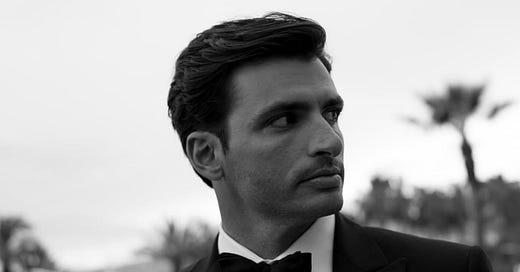


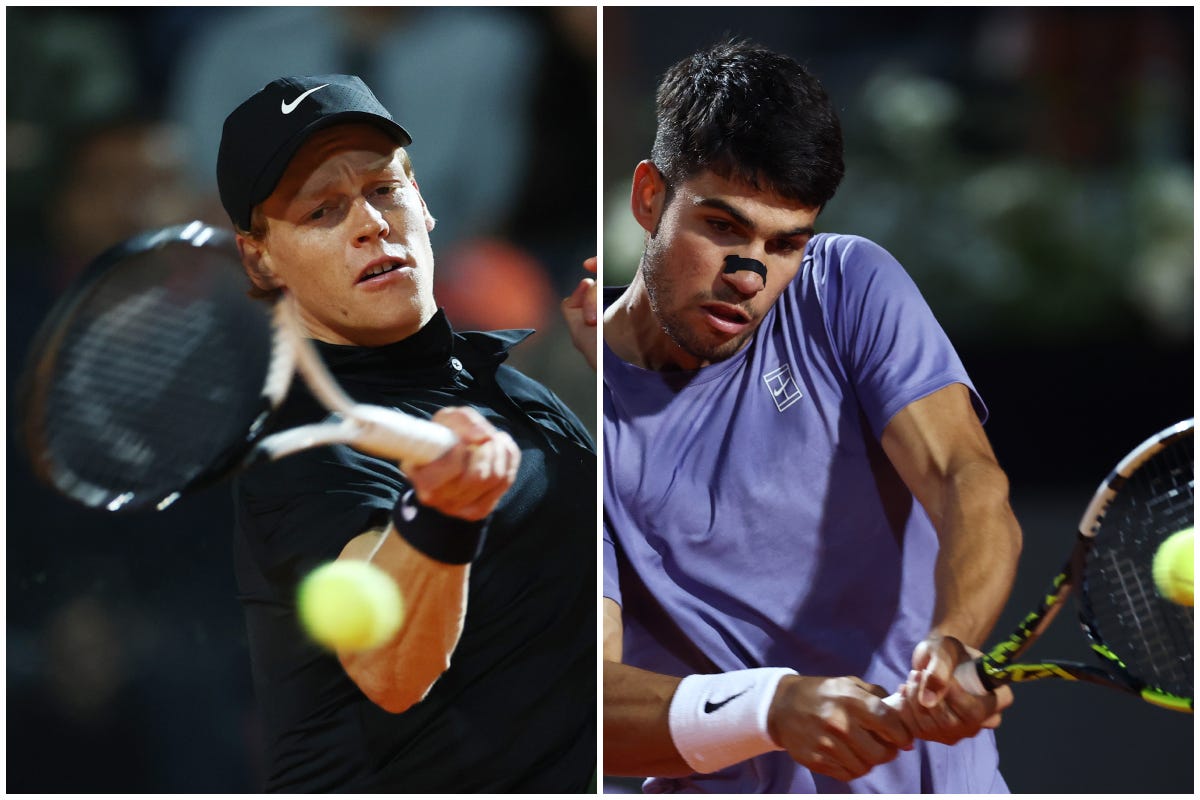

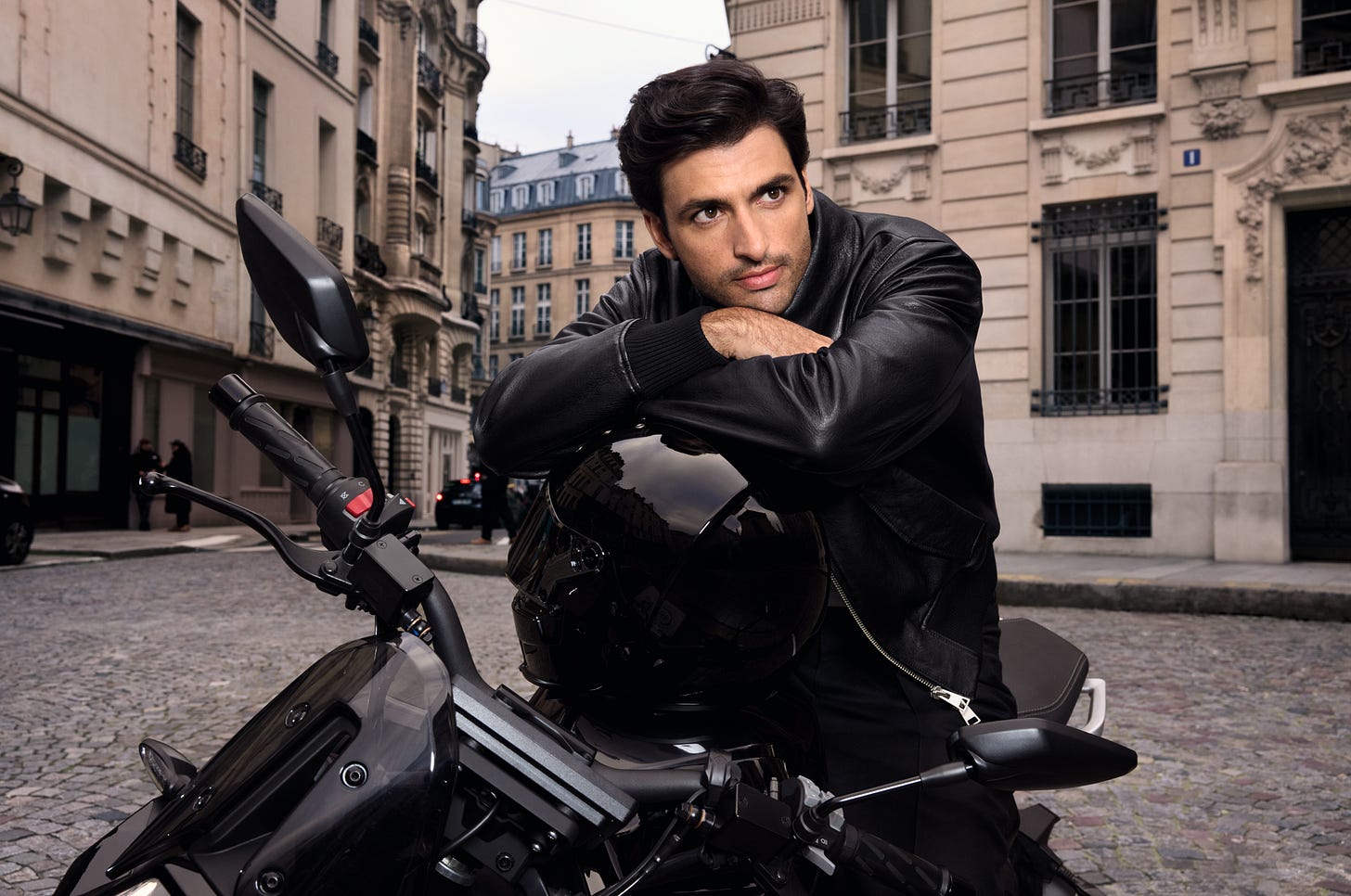
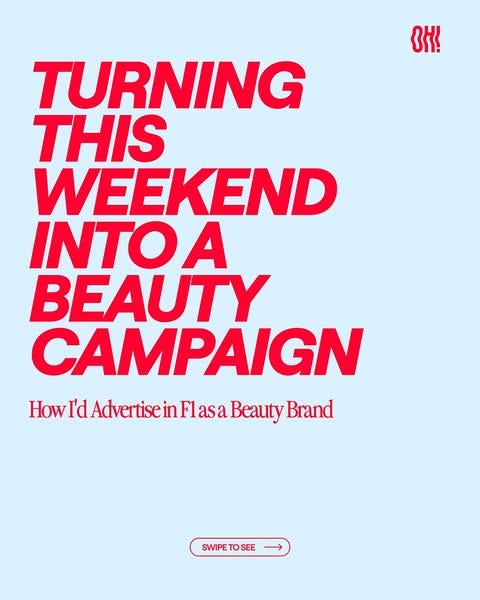




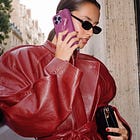

Alpine has just joined the Cannes festival too, love this f1 x cinema crossover (that isn’t related to the f1 movie)! Never thought I’d see Franco Colapinto on the red carpet but it suits him